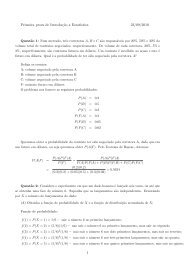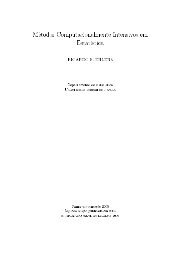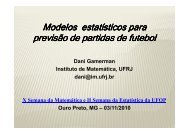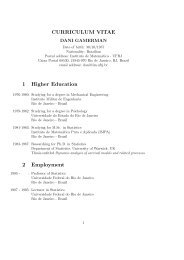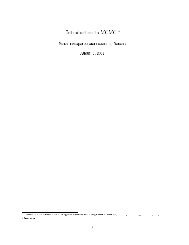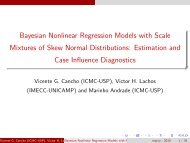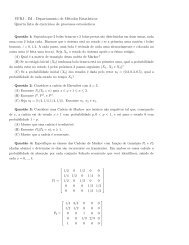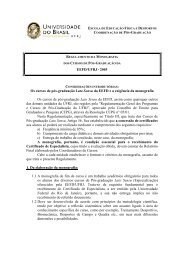Copulas: a Review and Recent Developments (2007)
Copulas: a Review and Recent Developments (2007)
Copulas: a Review and Recent Developments (2007)
Create successful ePaper yourself
Turn your PDF publications into a flip-book with our unique Google optimized e-Paper software.
Rivest (1993), Fermanian <strong>and</strong> Scaillet (2005).Important applications are found in the ¯elds of Insurance, Environment, Finance.Since marginal ¯ts present no di±culties using extreme value models, one can focuson modelling dependency through a variety of copula families. In Finance, the numberof publications applying copula based techniques is large. The main motivationcomes from the observed greater integration among world markets, which results instronger co-movements, increasing risk <strong>and</strong> reducing the opportunities for internationaldiversi¯cation. Li (2000) provides a Gaussian copula-based methodology toprice ¯rst-to-default credit derivatives. The issues of measuring ¯nancial risk <strong>and</strong>assessing the e®ect of copula choice on risk measures were addressed by a number ofauthors, including Embretchs et al. (2003), Ane <strong>and</strong> Kharoubi (2003), Mendes <strong>and</strong>Souza (2004), among others. The modelling of daily ¯nancial returns also motivatedMendes<strong>and</strong>Arslan(2005)toobtaintheexpression for the GT-copula. This is thecopula associated to the multivariate GT-distributions which includes as a specialcase the copula pertaining to the multivariate t-distribution. For a survey of ¯nancialapplications see, for example, Bouye et al. (2000) <strong>and</strong> Embretchs et al. (2003b).E®ective risk management techniques must include extreme value techniques. Inparticular, one non-linear measure of dependence at extreme levels, the tail dependencecoe±cient has become very popular.De¯nition (upper <strong>and</strong> lower tail dependence coe±cients). Let X 1 <strong>and</strong> X 2 ber<strong>and</strong>om variables with distribution functions F X1 <strong>and</strong> F X2 . The coe±cient of uppertail dependence is de¯ned by¸U = lim®!0 + ¸U(®) = lim®!0 + PrfX 1 >F ¡1X 1(1 ¡ ®)jX 2 >F ¡1X 2(1 ¡ ®)g ;provided a limit ¸U 2 [0; 1] exists. If ¸U 2 (0; 1], then X 1 <strong>and</strong> X 2 are said tobe asymptotically dependent in the upper tail. If ¸U =0,theyareasymptoticallyindependent. Similarly, the lower tail dependence coe±cient is given by¸L = lim®!1 ¡ ¸U(®) = lim®!1 ¡ PrfX 1




